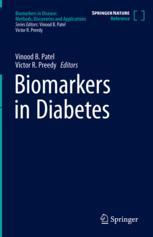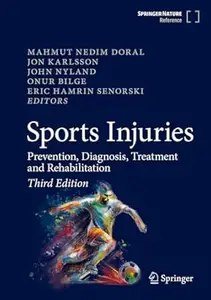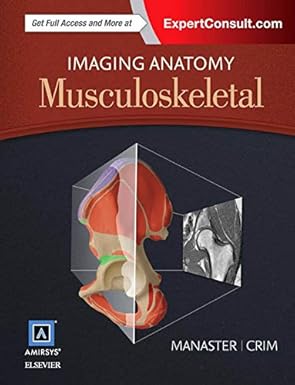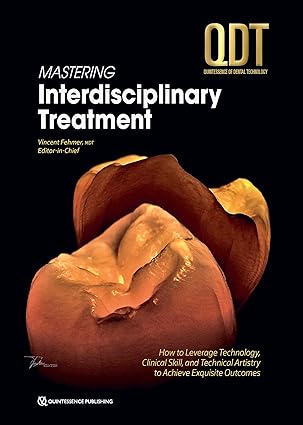Ellen C. Francis Lifecourse Epidemiology of Adiposity and Diabetes, Colorado School of Public Health, University of Colorado Anschutz Medical Campus, Aurora, CO, USA Mauro Galli Department of Medical Biology, Medical University of Bialystok, Bialystok, Poland Lay-Harn Gam School of Pharmaceutical Sciences, Universiti Sains Malaysia, Minden, Penang, Malaysia Thangiah Geetha Department of Nutrition, Dietetics, and Hospitality Manage- ment, Auburn University, Auburn, AL, USA Karina Braga Gomes Department of Clinical and Toxicological Analyses, School of Pharmacy, Federal University of Minas Gerais, Belo Horizonte, MG, Brazil Marta Greco Department of Health Sciences, University “Magna Græcia”, Catan- zaro, Italy Maria P. Guarino ciTechCare, Polytechnic of Leiria, Leiria, Portugal Daniel Gyamfi The Doctors Laboratory Ltd, London, UK Ahsan Hameed Clinical Research Centre, Medical University of Bialystok, Bialystok, Poland Shokoufeh Hassani Toxicology and Diseases Group (TDG), Pharmaceutical Sci- ences Research Center (PSRC), The Institute of Pharmaceutical Sciences (TIPS), Tehran University of Medical Sciences, Tehran, Iran Juan Pablo Hernández-Fonseca Instituto de Investigaciones Clínicas Dr. Américo Negrette, Facultad de Medicina, Universidad del Zulia, Maracaibo, Venezuela Megan Hetherington-Rauth Exercise and Health Laboratory, Faculty of Human Kinetics, University of Lisbon, Centre for the Study of Human Performance (CIPER), Estrada da Costa, Cruz Quebrada – Dafundo, Portugal Caroline Wei Shan Hoong Division of Endocrinology, Department of Medicine, Woodlands Health, Singapore, Singapore Satoshi Hoshide Division of Cardiovascular Medicine, Department of Medicine, Jichi Medical University School of Medicine, Tochigi, Japan Yi-Ting Hsieh Department of Ophthalmology, National Taiwan University Hospi- tal, Taipei, Taiwan Muhammad Umair Ijaz Department of Pathology and Laboratory Medicine, University of California Davis, Sacramento, CA, USA xviii Contributors Hiroshi Ikegami Department of Endocrinology, Metabolism and Diabetes, Faculty of Medicine, Kindai University, Osaka, Japan Md. Shahidul Islam Department of Biochemistry, School of Life Sciences, Uni- versity of Kwazulu-Natal, Durban, South Africa Che Aishah Nazariah Ismail
چکیده فارسی
الن سی فرانسیس دوره زندگی اپیدمیولوژی چاقی و دیابت، دانشکده بهداشت عمومی کلرادو، پردیس پزشکی دانشگاه کلرادو Anschutz، آرورا، CO، ایالات متحده آمریکا مائورو گالی گروه زیست شناسی پزشکی، دانشگاه پزشکی بیالیستوک، بیالیستوک، لهستان، لی-هارن دانشکده علوم دارویی گام، دانشگاه ساینس مالزی، میندن، پنانگ، مالزی گروه تغذیه، رژیم غذایی، و مدیریت مهماننوازی Thangiah Geetha، دانشگاه آبرن، آبرن، AL، ایالات متحده آمریکا کارینا براگا گومز گروه آنالیزهای بالینی و سمشناسی، دانشکده داروسازی ، دانشگاه فدرال میناس گرایس، بلو هوریزونته، ام جی، برزیل مارتا گرکو گروه علوم بهداشتی، دانشگاه "Magna Græcia"، Catanzaro، ایتالیا Maria P. Guarino ciTechCare، پلی تکنیک Leiria، Leiria، پرتغال Daniel Gyamfi The Doctors Laboratory Ltd. ، لندن، انگلستان مرکز تحقیقات بالینی احسن حمید، دانشگاه پزشکی بیالیستوک، بیالیستوک، لهستان، گروه سم شناسی و بیماری های شکوفه حسنی (TDG)، مرکز تحقیقات علوم دارویی (PSRC)، موسسه علوم دارویی (TIPS)، دانشگاه تهران علوم پزشکی، تهران، ایران Juan Pablo Hernández-Fonseca Instituto de Investigaciones Clínicas Dr. Américo Negrette, Facultad de Medicina, Universidad del Zulia, Maracaibo, Venezuela Megan Hetherington-Rauth Center Exercise and Health Laboratory, Kbonine, University of Human برای مطالعه عملکرد انسان (CIPER)، استرادا دا کوستا، کروز کوبرادا - دافوندو، پرتغال بخش غدد درون ریز کارولین وی شان هونگ، گروه پزشکی، سلامت جنگل، سنگاپور، سنگاپور ساتوشی هوشیده بخش پزشکی قلب و عروق، گروه پزشکی جیچی، دانشکده پزشکی دانشگاه پزشکی، توچیگی، ژاپن یی-تینگ هسیه گروه چشم پزشکی، بیمارستان ملی دانشگاه تایوان، تایپه، تایوان محمد عمیر ایجاز گروه آسیب شناسی و پزشکی آزمایشگاهی، دانشگاه کالیفرنیا دیویس، ساکرامنتو، کالیفرنیا، ایالات متحده xviii همکاران Hiroshi ایکگامی گروه غدد درون ریز، متابولیسم و دیابت، دانشکده پزشکی، دانشگاه کیندای، اوزاکا، ژاپن، دکتر شهیدالاسلام گروه بیوشیمی، دانشکده علوم زیستی، دانشگاه کوازولو-ناتال، دوربان، آفریقای جنوبی چه عایشه نظریه اسماعیل p>
ادامه ...
بستن ...
Department of Physiology, School of Medical Sci- ences, Universiti Sains Malaysia Health Campus, Kubang Kerian, Kelantan, Malaysia Andrzej S. Januszewski NHMRC Clinical Trials Centre, The University of Syd- ney, Camperdown, NSW, Australia Department of Medicine, University of Melbourne, Fitzroy, VIC, Australia Alicia J. Jenkins Department of Medicine, University of Melbourne, Fitzroy, VIC, Australia Zhuyi Jiang Department of Endocrinology, Shenzhen People’s Hospital, Shenzhen, Guangdong, China Hale Maral Kır Department of Medical Biochemistry, Faculty of Medicine, Kocaeli University, Kocaeli, Turkey Yulia Karakulova Department of Neurology and Medical Genetics, Academician Ye.A.Vagner Perm State Medical University, Perm, Russia Kazuomi Kario Division of Cardiovascular Medicine, Department of Medicine, Jichi Medical University School of Medicine, Tochigi, Japan Min Kim Department of Ophthalmology, Gangnam Severance Hospital, Institute of Vision Research, Yonsei University College of Medicine, Seoul, South Korea Adam Kretowski Clinical Research Centre, Medical University of Bialystok, Bialystok, Poland Department of Endocrinology, Diabetology, and Internal Medicine, Medical Uni- versity of Bialystok, Bialystok, Poland Marlene Lages ciTechCare, Polytechnic of Leiria, Leiria, Portugal Ivan Pochou Lai Department of Ophthalmology, National Taiwan University Hospital, Taipei, Taiwan Ricardo Lamy Department of Ophthalmology, School of Medicine, University of California, San Francisco, San Francisco, CA, USA Ming-Jui Lee National Taiwan University Hospital, Taipei, Taiwan Idris Long School of Health Sciences, Universiti Sains Malaysia Health Campus, Kubang Kerian, Kelantan, Malaysia Contributors xix Carolina Madeira Department of Ophthalmology, Centro Hospitalar de Vila Nova de Gaia e Espinho, Porto, Portugal Faculty of Medicine, University of Porto, Porto, Portugal Per Lav Madsen Department of Cardiology, Herlev-Gentofte Hospital, Copenha- gen University Hospital, Herlev, Denmark João P. Magalhães Exercise and Health Laboratory, Faculty of Human Kinetics, University of Lisbon, Centre for the Study of Human Performance (CIPER), Estrada da Costa, Cruz Quebrada – Dafundo, Portugal Tandi E. Matsha SAMRC/CPUT Cardiometabolic Health Research Unit, Depart- ment of Biomedical Sciences, Faculty of Health and Wellness Sciences, Cape Peninsula University of Technology, Bellville, South Africa Don M. Matshazi SAMRC/CPUT Cardiometabolic Health Research Unit, Depart- ment of Biomedical Sciences, Faculty of Health and Wellness Sciences, Cape Peninsula University of Technology, Bellville, South Africa Marwa Ahmed Meheissen Medical Microbiology & Immunology Department, Faculty of Medicine, Alexandria University, Azarita, Alexandria, Egypt Rauf Melekoglu Department of Obstetrics and Gynecology, School of Medicine, Inonu University, Malatya, Turkey Maria Mirabelli Department of Health Sciences, University “Magna Græcia”, Catanzaro, Italy Raghavendra G. Mirmira Department of Medicine, University of Chicago, Chi- cago, IL, USA Kayvan Mirnia Department of Neonatology, School of Medicine, Tehran Univer- sity of Medical Sciences, Tehran, Iran Jee-Young Moon Department of Epidemiology and Population Health, Albert Einstein College of Medicine, Bronx, NY, USA Shinje Moon Division of Endocrinology and Metabolism, Department of Internal Medicine, Hallym University College of Medicine, Seoul, South Korea Rafael Noal Moresco Laboratory of Clinical Biochemistry, Department of Clinical and Toxicological Analysis, Center of Health Sciences, Federal University of Santa Maria, Santa Maria, RS, Brazil Jesús A. Mosquera-Sulbarán Instituto de Investigaciones Clínicas Dr. Américo Negrette, Facultad de Medicina, Universidad del Zulia, Maracaibo, Venezuela Dipuo D. Motshwari SAMRC/CPUT Cardiometabolic Health Research Unit, Department of Biomedical Sciences, Faculty of Health and Wellness Sciences, Cape Peninsula University of Technology, Bellville, South Africa xx Contributors Shinsuke Noso Department of Endocrinology, Metabolism and Diabetes, Faculty of Medicine, Kindai University, Osaka, Japan Chang-Myung Oh Department of Biomedical Science and Engineering, Gwangju Institute of Science and Technology, Gwangju, South Korea Ademola O. Olaniran Discipline of Microbiology, School of Life Sciences, Uni- versity of Kwazulu-Natal, Durban, South Africa Tosin A. Olasehinde Discipline of Microbiology, School of Life Sciences, Univer- sity of Kwazulu-Natal, Durban, South Africa Nutrition and Toxicology Division, Food Technology Department, Federal Institute of Industrial Research, Oshodi, Nigeria Sunday I. Oyeleye Department of Biomedical Technology, Federal University of Technology, Akure, Nigeria Berrin Öztaş Department of Medical Biochemistry, Faculty of Medicine, Kocaeli University, Kocaeli, Turkey Vinood B. Patel School of Life Sciences, University of Westminster, London, UK Wei Perng Lifecourse Epidemiology of Adiposity and Diabetes, Colorado School of Public Health, University of Colorado Anschutz Medical Campus, Aurora, CO, USA Victor R. Preedy Department of Nutrition and Dietetics, School of Life Course and Population Sciences, Faculty of Life Sciences and Medicine, King’s College London, London, UK Salvatore Andrea Pullano Department of Health Sciences, University “Magna Græcia”, Catanzaro, Italy Anggelia Puspasari Department of Medical Biology and Biochemistry, Faculty of Medicine and Health Sciences, Universitas Jambi, Jambi, Indonesia Qibin Qi Department of Epidemiology and Population Health, Albert Einstein College of Medicine, Bronx, NY, USA Mohamed Rafiullah Strategic Center for Diabetes Research, College of Medicine, King Saud University, Riyadh, Saudi Arabia Shanel Raghubeer SAMRC/CPUT Cardiometabolic Health Research Unit, Department of Biomedical Sciences, Faculty of Health and Wellness Sciences, Cape Peninsula University of Technology, Bellville, South Africa Rajkumar Rajendram College of Medicine, King Saud bin Abdulaziz University for Health Sciences, Riyadh, Saudi Arabia Department of Medicine, King Abdulaziz Medical City, King Abdullah International Medical Research Center, Riyadh, Ministry of National Guard Health Affairs, Riyadh, Saudi Arabia Contributors xxi Anusha S. J Department of Pharmacology, Dr. Chandramma Dayanand Sagar Institute of Medical Education and Research (CDSIMER), Devarakaggalahalli, Karnataka, India Joana F. Sacramento CEDOC, NOVA Medical School, Faculdade de Ciências Médicas, Universidade NOVA de Lisboa, Lisbon, Portugal Alessandro Salatino Department of Health Sciences, University “Magna Græcia”, Catanzaro, Italy Armin Salek Maghsoudi Toxicology and Diseases Group (TDG), Pharmaceutical Sciences Research Center (PSRC), The Institute of Pharmaceutical Sciences (TIPS), Tehran University of Medical Sciences, Tehran, Iran Deborah Conte Santos Diabetes Unit, Universidade do Estado do Rio de Janeiro, Rio de Janeiro, RJ, Brasil Joost H. N. Schuitemaker Division of Medical Biology, Department of Pathology and Medical Biology, University Medical Center Groningen, Groningen, The Netherlands Vaithinathan Selvaraju Department of Nutrition, Dietetics, and Hospitality Man- agement, Auburn University, Auburn, AL, USA Sabyasachi Sen Department of Medicine, The George Washington University, School of Medicine and Health Sciences, Washington, DC, USA Department of Medicine, Veterans Affairs Medical Center, Washington, DC, USA Shilpa S. Shetty Central Research Laboratory, K.S. Hegde Medical Academy, Nitte (Deemed to be University), Deralakatte, Karnataka, India Padmaja Shetty K Department of Pharmacology, Dr. Chandramma Dayanand Sagar Institute of Medical Education and Research (CDSIMER), Devarakaggalahalli, Karnataka, India Khalid Siddiqui Strategic Center for Diabetes Research, College of Medicine, King Saud University, Riyadh, Saudi Arabia Matthew J. Singleton WellSpan Health, York, PA, USA Peter S. Spencer Department of Neurology, School of Medicine and Oregon Institute of Occupational Health Sciences, Oregon Health & Science University, Portland, OR, USA George S. Stergiou Hypertension Center STRIDE-7, National and Kapodistrian University of Athens, School of Medicine, Third Department of Medicine, Sotiria Hospital, Athens, Greece Jay M. Stewart Department of Ophthalmology, School of Medicine, University of California, San Francisco, San Francisco, CA, USA xxii Contributors N. Suchetha Kumari Department of Biochemistry/Central Research Laboratory, K.S. Hegde Medical Academy, Nitte (Deemed to be University), Deralakatte, Karnataka, India Daisuke Suzuki Division of Cardiovascular Medicine, Department of Medicine, Jichi Medical University School of Medicine, Tochigi, Japan Department of Medicine, Division of Endocrinology and Metabolism, Jichi Medical University Saitama Medical Center, Saitama, Japan Sarah A. Tersey Department of Medicine, University of Chicago, Chicago, IL, USA Meng-Ju Tsai Department of Ophthalmology, Taoyuan General Hospital, Ministry of Health and Welfare, Taoyuan, Taiwan Seyfettin Üstünsoy Department of Central Clinical Biochemistry Laboratory, Pri- vate Anadolu Hospital, Silivri/İstanbul, Turkey Remya Varadarajan Central Research Laboratory, K.S. Hegde Medical Academy, Nitte (Deemed to be University), Deralakatte, Karnataka, India Andriani Vazeou Diabetes Centre, A’ Department of Pediatrics, P&A Kyriakou Children’s Hospital, Athens, Greece David H. Wagner Department of Medicine, The University of Colorado Anschutz Medical Campus, Aurora, CO, USA Cecil J. Weale SAMRC/CPUT Cardiometabolic Health Research Unit, Depart- ment of Biomedical Sciences, Faculty of Health and Wellness Sciences, Cape Peninsula University of Technology, Bellville, South Africa Betul Yakistiran Perinatology Department, University of Health Sciences, Ankara Bilkent City Hospital, Ankara, Turkey Marcos Yukio Yoshinaga Department of Biochemistry, Institute of Chemistry, University of São Paulo, São Paulo, SP, Brazil Aykan Yucel Perinatology Department, University of Health Sciences, Ankara Bilkent City Hospital, Ankara, Turkey Em Yunir Division of Endocrinology, Metabolism, and Diabetes, Department of Internal Medicine, Dr. Cipto Mangunkusumo National General Hospital, Faculty of Medicine Universitas Indonesia, Jakarta, Indonesia Chang Zeng Department of Preventive Medicine, Northwestern University Feinberg School of Medicine, Chicago, IL, USA Wei Zhang Department of Preventive Medicine, Northwestern University Feinberg School of Medicine, Chicago, IL, USA Contributors xxiii Part I General Aspects Linking Variants of Hemoglobin A1C and Glycemic Status 1 Jee-Young Moon and Qibin Qi Contents Introduction . . . . . . . . . . . . . . . . . . . . . . . . . . . . . . . . . . . . . . . . . . . . . . . . . . . . . . . . . . . . . . . . . . . . . . . . . . . . . . . . . . . . . . . 4 Overview of Genome-Wide Association Studies of HbA1c . . . . . . . . . . . . . . . . . . . . . . . . . . . . . . . . . . . . 5 Functional Characterization of HbA1c-Associated Genetic Variants . . . . . . . . . . . . . . . . . . . . . . . . . . . 7 Glycemic-Related Genetic Variants . . . . . . . . . . . . . . . . . . . . . . . . . . . . . . . . . . . . . . . . . . . . . . . . . . . . . . . . . . . 8 Erythrocyte-Related Genetic Variants . . . . . . . . . . . . . . . . . . . . . . . . . . . . . . . . . . . . . . . . . . . . . . . . . . . . . . . . 9 Unclassified Genetic Variants . . . . . . . . . . . . . . . . . . . . . . . . . . . . . . . . . . . . . . . . . . . . . . . . . . . . . . . . . . . . . . . . . 11 Erythrocyte-Related HbA1c Variants and Glycemic Status Screening . . . . . . . . . . . . . . . . . . . . . . . . . . 12 G6PD: rs1050828 and rs76723693 . . . . . . . . . . . . . . . . . . . . . . . . . . . . . . . . . . . . . . . . . . . . . . . . . . . . . . . . . . . 12 HBB-rs334 . . . . . . . . . . . . . . . . . . . . . . . . . . . . . . . . . . . . . . . . . . . . . . . . . . . . . . . . . . . . . . . . . . . . . . . . . . . . . . . . . . . . 13 G6PD-rs1050828 and HBB-rs334 . . . . . . . . . . . . . . . . . . . . . . . . . . . . . . . . . . . . . . . . . . . . . . . . . . . . . . . . . . . . 14 Cumulative Effect of Erythrocyte-Related Genetic Variants . . . . . . . . . . . . . . . . . . . . . . . . . . . . . . . . . 15 Conclusion . . . . . . . . . . . . . . . . . . . . . . . . . . . . . . . . . . . . . . . . . . . . . . . . . . . . . . . . . . . . . . . . . . . . . . . . . . . . . . . . . . . . . . . . 15 Applications to Other Diseases or Conditions . . . . . . . . . . . . . . . . . . . . . . . . . . . . . . . . . . . . . . . . . . . . . . . . . . . 15 Mini-Dictionary of Terms . . . . . . . . . . . . . . . . . . . . . . . . . . . . . . . . . . . . . . . . . . . . . . . . . . . . . . . . . . . . . . . . . . . . . . . . 16 Key Facts of HbA1c . . . . . . . . . . . . . . . . . . . . . . . . . . . . . . . . . . . . . . . . . . . . . . . . . . . . . . . . . . . . . . . . . . . . . . . . . . . . . . 16 Summary Points . . . . . . . . . . . . . . . . . . . . . . . . . . . . . . . . . . . . . . . . . . . . . . . . . . . . . . . . . . . . . . . . . . . . . . . . . . . . . . . . . . 17 Reference . . . . . . . . . . . . . . . . . . . . . . . . . . . . . . . . . . . . . . . . . . . . . . . . . . . . . . . . . . . . . . . . . . . . . . . . . . . . . . . . . . . . . . . . . . 17 Abstract Hemoglobin A1C (HbA1c) has been used as a convenient screening test for the diagnosis of diabetes and prediabetes, requiring no fasting, as well as a reliable measure for monitoring the glycemic control in people with diabetes. As HbA1c is the measure of the fraction of glycated hemoglobin out of total hemoglobin in red blood cells, both blood glucose levels and blood cell conditions affect levels of HbA1c. Consistently, genome-wide association studies on HbA1c have iden- tified multiple genetic loci, largely grouped into two separate pathways – via the J.-Y. Moon (*) · Q. Qi Department of Epidemiology and Population Health, Albert Einstein College of Medicine, Bronx, NY, USA e-mail: jee-young.moon@einsteinmed.edu; qibin.qi@einsteinmed.edu © Springer Nature Switzerland AG 2023 V. B. Patel, V. R. Preedy (eds.), Biomarkers in Diabetes, Biomarkers in Disease: Methods, Discoveries and Applications, https://doi.org/10.1007/978-3-031-08014-2_2 3 glycemic pathway and via the erythrocyte pathway. Two genetic variants, G6PD- rs1050828 and HBB-rs334, specifically found in individuals with African ances- try, were noted for their relatively large effects on HbA1c via the erythrocytic pathway, compared to other genetic variants. The glycemic status of individuals carrying the HbA1c-lowering alleles might be underestimated by HbA1c levels, as lower HbA1c level is observed compared to their actual glycemic status due to their genetic influences on blood cell biology. In addition, several erythrocyte- related genetic variants of small effects may also have a combined impact on HbA1c in this regard. Thus, the influences of these non-glycemic-related variants need to be considered when the HbA1c test is performed to measure glycemic status. Keywords HbA1c · Type 2 diabetes · Diabetes diagnosis · Genetic variant · SNP · GWAS · Erythrocyte · Blood traits · RBC · Glucose · G6PD deficiency · Hemoglobin · Sickle cell trait · HbA1c recalibration Abbreviations 2 hr. OGTT 2-hour oral glucose tolerance test ADA American Diabetes Association G6PD Glucose-6-phosphate dehydrogenase GRS Genetic risk score GWAS Genome-wide association study HbA1c Hemoglobin A1C MAF Minor allele frequency MAGIC The Meta-Analysis of Glucose and Insulin-related Traits Consortium MCV Mean corpuscular volume RBC Red blood cell SCT Sickle cell trait SNP Single nucleotide polymorphism T2D Type 2 diabetes WGS Whole genome sequencing Introduction Hemoglobin A1C or glycated hemoglobin (HbA1c) has been used for diabetes diagnosis as well as for monitoring glycemic control over the past 3 months for people with diabetes (American Diabetes Association 2010). This glycated hemo- globin is formed by blood glucose attached to the hemoglobin, specifically, N-terminal of beta-chains, in red blood cells (RBC, erythrocyte) by the non-enzymatic and irreversible reaction. Hence, the fraction of glycated hemoglo- bin out of total hemoglobin reflects the blood glucose levels over the lifespan of 4 J.-Y. Moon and Q. Qi erythrocytes, typically 120 days. While HbA1c indirectly measures blood glucose levels, HbA1c is a robust indicator of chronic hyperglycemia (high blood sugar) over the past 3–4 months, compared to a glucose-level measurement at one time point from a fasting blood glucose test or an oral glucose tolerance test, which can vary depending on the activity levels, stress, and hormone levels (Bonora and Tuomilehto 2011). Another strength of HbA1c test is that it can be performed any time without requiring 8 h of fasting or waiting for 2 h for the oral glucose test. Furthermore, HbA1c is a prognostic marker of diabetic complication risk such as diabetic retinopathy, nephropathy, and neuropathy (Skyler 1996). On the other hand, HbA1c levels can be influenced by hematologic conditions such as hemoglobinopathy, anemia, iron deficiency or overload, and recent blood loss or transfusion (Cohen et al. 2008; Sacks 2012; American Diabetes Association 2021). Given this clinical importance of HbA1c, recent genome-wide association studies (GWASs) have been conducted to understand the genetics of HbA1c. These genetic studies suggest two major pathways on how genetic variants influence HbA1c levels. One is glycemic-related pathway and the other is erythrocytic-related path- way. We will look in detail on the identified genetic associations with HbA1c and describe the clinical implications of these findings. Overview of Genome-Wide Association Studies of HbA1c Since the first GWAS of HbA1c in 2007 (Meigs et al. 2007) until now in 2021, over 15 GWASs have been conducted on HbA1c by single ancestral group analysis in Europeans (Meigs et al. 2007; Pare et al. 2008; Franklin et al. 2010; Soranzo et al. 2010; An et al. 2014; Prins et al. 2017), Hispanics/Latinos (Moon et al. 2019; Wojcik et al. 2019), and East Asians or South Asians (Ryu and Lee 2012; Chen et al. 2013; Chen et al. 2014; Hachiya et al. 2017; Kanai et al. 2018; Spracklen et al. 2018; Chai et al. 2020) as well as by trans-ancestral analysis (Wheeler et al. 2017; Chen et al. 2021; Sarnowski et al. 2019) (Table 1). Very recently, the Meta- Analysis of Glucose and Insulin-related Traits Consortium (MAGIC) published the most diverse and 1 of the largest GWASs on HbA1c of 215,977 individuals free of diabetes from 76 cohorts (including majority of prior GWAS cohorts), comprised of 70% Europeans, 13% East Asians, 7% Hispanics/Latinos, 6% African Ameri- cans, 3% South Asians, and 2% sub-Saharan Africans (Chen et al. 2021). The study identified 127 HbA1c-associated loci (218 variants), explaining about 4.5–6% of HbA1c variation (Chen et al. 2021). In addition, a whole genome sequencing (WGS)-based association study identified several low-frequency or rare variants associated with HbA1c (i.e., rs1039215 in HBG2 and HBE1, rs76723693 in coding region of G6PD with p.Leu353Pro) in 10,338 individuals (6158 Europeans, 3123 Africa Americans, 650 Hispanics, and 407 East Asians) in the Trans-Omics for Precision Medicine (TOPMed) Program (Sarnowski et al. 2019). The analysis with WGS is expected to grow and provide enhanced under- standing of genetics of HbA1c. 1 Linking Variants of Hemoglobin A1C and Glycemic Status 5
ادامه ...
بستن ...










